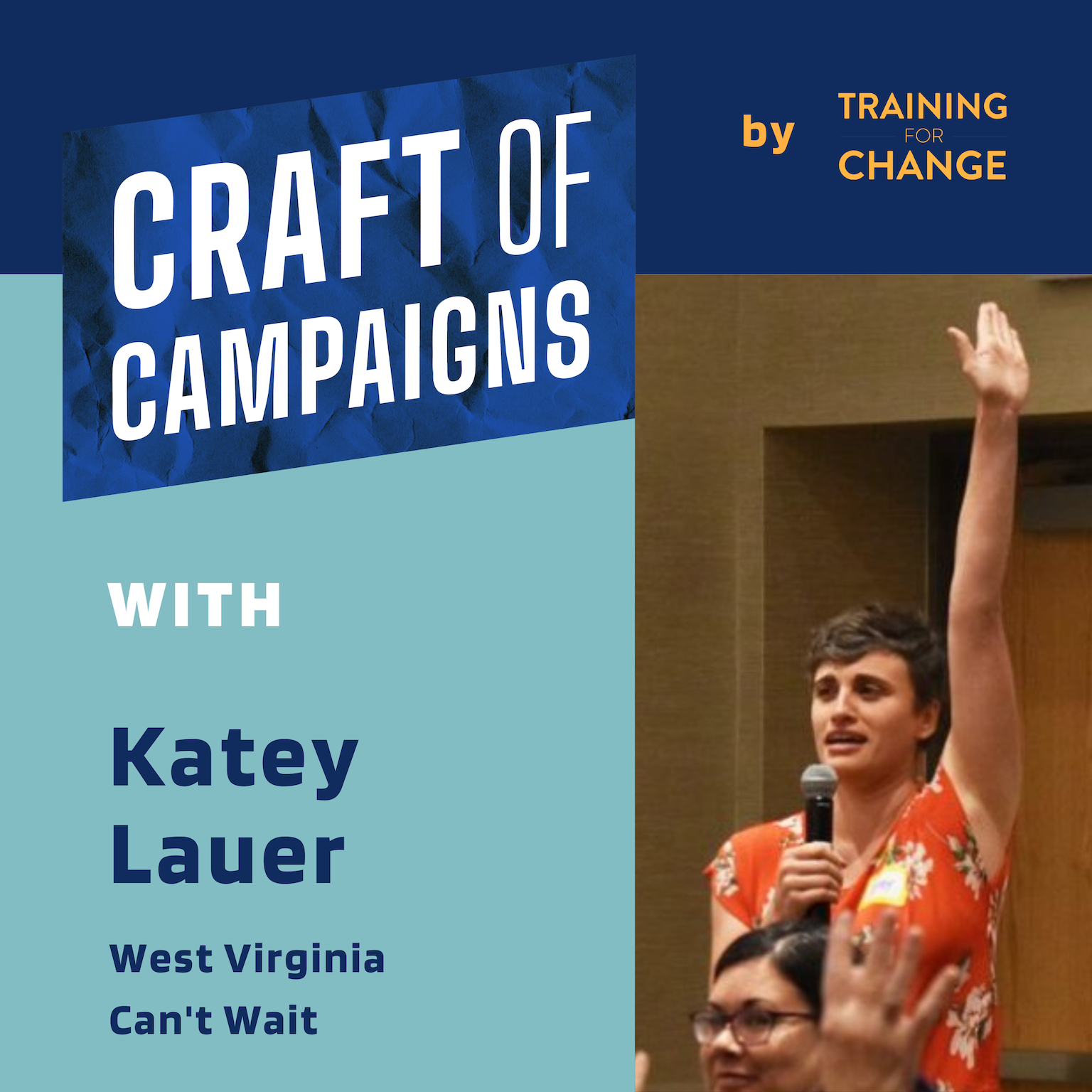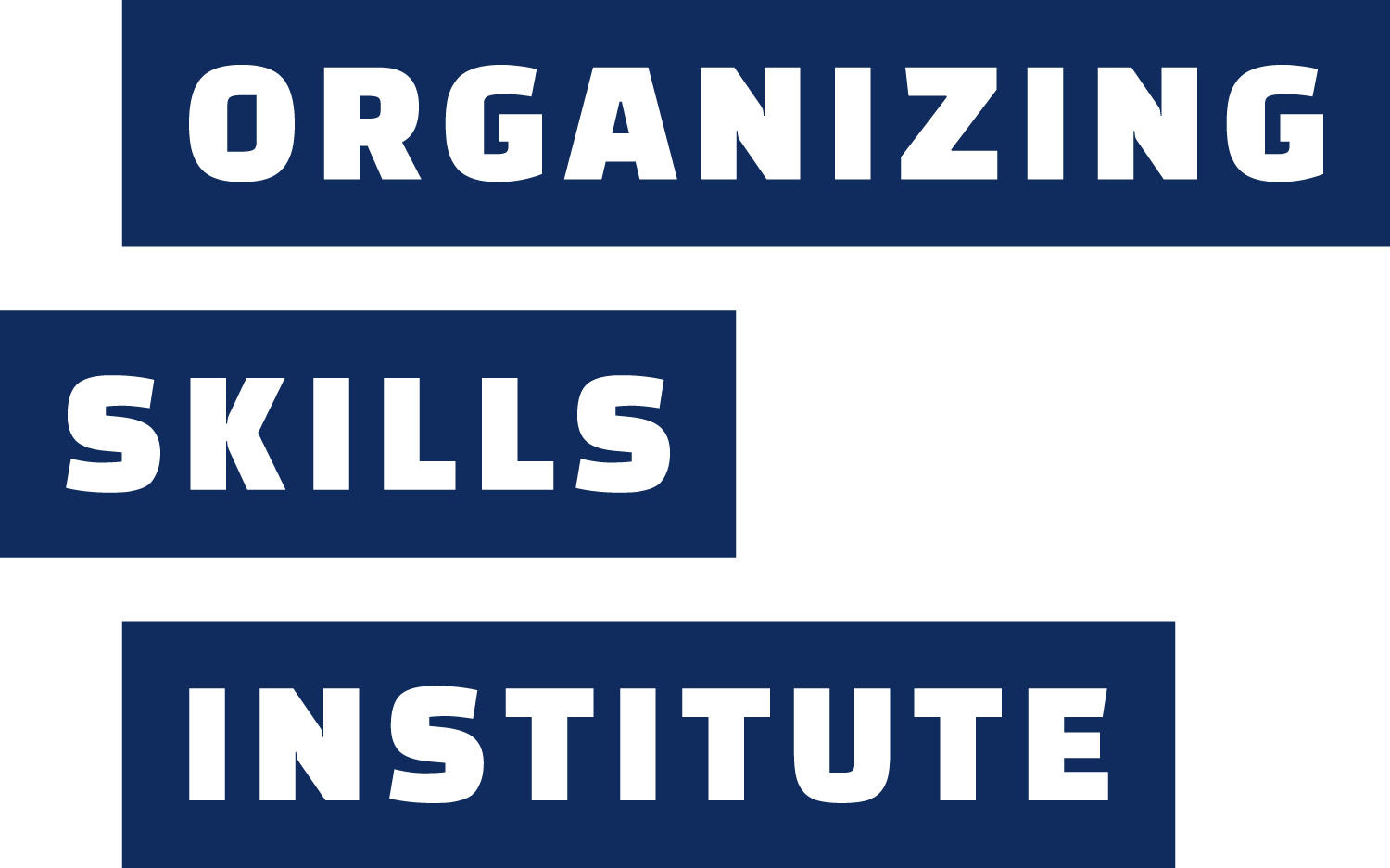S1E10: Katey Lauer on how to grieve when our campaigns get stuck & weathering transitions with grace
February 7, 2023
Episode Guests
Katey Lauer is an organizer, facilitator, and trainer in West Virginia, with a deep love of place. She has formed and led grassroots organizations in the Appalachian mountains for fifteen years, as Coordinator of The Alliance for Appalachia, Lead Organizer of Appalachia Rising and The March on Blair Mountain, and founding Director of the West Virginia Mine Wars Museum. Architect of the WV Can’t Wait movement, Katey currently acts as Co-chair of this statewide formation that’s out to win a people’s government in the mountain state. Katey is also a Core Trainer at Training for Change.
Learning to Take Time to Grieve After a Big Campaign Loss
By Andrew Willis Garcés | also published in The Forge
For this Craft of Campaigns episode, I talked with Katey Lauer of West Virginia Can’t Wait, who recently shared her post-midterms reflections with The Forge. She also previously wrote about why we should “Bet on Institution Building, Not Joe Manchin.” We spoke over the summer of 2022 about how she felt like our movements nationally were going through growing pains very similar to West Virginia’s cross-movement stagnation during the Obama Administration’s second term.
I asked her to expand on her reflections in January 2023, following completion of her organization’s most recent two-year season of campaign work, during which West Virginia organizers again experienced several disappointing campaign losses.
When we spoke over the summer, you told me about this period of campaign after campaign that culminated in 2014. Your organization at the time, the Alliance for Appalachia, was involved in a number of fights with an overlapping set of climate justice groups. Some marched on Blair Mountain to stop mountaintop removal coal mining on the site of one of the country’s largest labor uprisings; some were campaigning against water contamination from similar mining sites. And many of you thought that, whatever the Obama Administration’s flaws, they could be counted on to take some of the substantive measures you all were calling for to more or less end this destructive mining practice. But ultimately the EPA refused to do much of anything, disappointing many Appalachian organizers. What else was happening in your organizing terrain at the end of 2013 that feels similar to right now?
That story – of building campaigns, gaining momentum, focusing the work on a common target, losing (or winning), and then feeling lost – is the story I see playing out across movement communities right now. For some, that arc was around defeating Trump’s election. For others, that arc was around pushing the Biden administration to pass a Green New Deal.
For Appalachian organizers, in the years prior to Obama’s election, we were in a building stage. We were gaining momentum, absorbing new people into the movement weekly. The way our power was growing felt palpable. And then, once Obama was elected, we assumed, as you said, that this would be our big break, that everything we’d been working toward would come to fruition. We focused our energy there. And, we lost. And, most importantly, we didn’t know where to go from there.
To be clear, I think there’s something about this arc that is organic. Of course we want to build toward a campaign or movement goal and of course at some point we will win or lose that fight (or something in between). I think a place we have to grow as movements is in seeing this cycle, and especially learning what options we have for navigating the final part of the arc: the aftermath.
When we spoke over the summer, you talked about a movement-wide summit in 2014 focused on reflection and planning for the future. At the time, you said around 80% of your work was just doing relationship maintenance in your coalition, while only 20% was spent on moving campaigns. In hindsight, you realized the summit was trying to “make each other show up in a particular way,” which ended up being “counterproductive” to your long-term work. What did you wish you all had done instead to address those dynamics?
In the case of the mountaintop removal movement, instead of that summit, what I wish we had done at that event was grieve and celebrate and take some real emotional stock. Instead we did what I see a lot of groups doing now: we doubled-down on old strategies (“We can’t stop now!”) and blamed or attacked each other for the difficult spot we were in. My main memory from that time is just how much pain there was.
I have the great gift of being a leader in a new movement formation now – WV Can’t Wait – and I’ve been able to carry a lot of the lessons I learned from that time into shaping a culture for this organization. We’ve navigated three major campaign transitions over the last five years. And I’ve seen us – thank goodness – thrive through them.
How else has WVCW adapted to changing terrain — in terms of external targets or things like Trumpism or with the internal peaks and valleys within the movement?
I think WV Can’t Wait’s success in moving through changing terrain externally and internally is less about our campaigns themselves and more about cultural norms we’ve established as an organization.
For example, one of the ways we operate is that we always define a timeframe for the next season of our work before we begin it. We just wrapped up another two-year season, built around running a local slate of candidates, running a series of statewide candidates, launching an Organizer Apprenticeship program, awarding Hometown Hero Awards (as a base-building strategy), creating a governance program for our then-eighteen elected officials, and trying for three ballot initiatives.
Doing that – saying, this season of work will go from this date to that date – creates an organic transition point. It says, we’re running these campaigns between these dates and then we’re going to pause and rest and evaluate. This does a lot of things, but the primary one is that it builds the aftermath stage into our work as a real stage (instead of a thing we might otherwise gloss over or fight or try to avoid). It means we have a natural end date for organizational roles — -people can really take stock and check in about if the role each of us is playing is still right-fitting or not. It means we have a natural end date for a campaign or project — we can evaluate what we learned, take real stock of how the terrain has shifted as well as our appetite for continuing or not.
This sounds practical and logistical, and it is. Functionally, this might mean that the organization is in an aftermath season, or what we call a “transition” in our work plans, for several months. But I can’t quite emphasize enough what a soulful thing this is too. Fundamentally, it’s about pacing with what is true in our spirits: that things always change, are always evolving. Our movements often behave as though that isn’t true. No wonder we fight or break or hurt as things change anyway — in some ways, when organizations are in strife, I think it’s folks rebelling against organizational cultures that assume our work will happen on a perpetual upward arc (hello capitalism!).
How have you all at WV Can’t Wait tried to learn from that moment with your response to the post-2020 landscape? What are you doing differently?
Another thing — in addition to using seasons of work — is that we treat everything we do as an experiment. So much so that it’s infused into our organizational vocabulary. We don’t ask, “What should our next campaign be?” We ask, “What experiment do we want to try next?” It’s a slight psychological difference, but I think it lets us hold our work lightly. When something we do fails – which it inevitably will – we have a little more built-in resilience and curiosity.
For example, in the last election cycle, we really wanted to find out if Independents could win at the local level if they had robust field operations. (We live in a state where it’s difficult to get Democrats elected right now, and where we, frankly, have a lot of different values than the Democratic establishment). We ran four Independents in local races this year, with different folks in our leadership having different beliefs about how well they would do. Every one of our Independents lost outright. We grieved it, especially in care for the candidates who stuck their necks out there and did a ton of work. But strategically, we could hold it lightly. One of our staff who was especially excited about this strategy said in a meeting when we debriefed, “Welp, now we know! Experiment complete!” There’s an ease that experimentation invites.
When we spoke over the summer, you said the conditions were getting even more difficult for electoral work in the state and you were anticipating there wouldn’t be any “big sexy wins” in 2022. This was different from the vibe in 2020, when we were focused on building and mobilizing. As a result, you told me, “I see a lot of this turning inward…. [A] lot of organizers not feeling like it’s very possible to manifest power against our opponents right now are manifesting it against each other and we’re tearing each other up.” What has WVCW tried to do proactively as the landscape has changed?
One response we could have to the conditions being very difficult is that we could put pressure on ourselves to find the exact right perfect strategy that will fix everything. We could try to extract from ourselves the “right” thing to do. I think that’s a fool’s errand – not only do I think it’s impossible to know what that is; it’s also not a posture that invites creativity and growth (two of the things I think we’ll actually need to make our way through). Another response is to see some opportunity in the difficult odds. Things are hard, there’s not a clear, easy path forward, so we can ask, “What do we feel called toward? What is the work and way that we want to do?”
We just had a weekend-long movement retreat with 30 leaders across our state, and spent much of the second day of that retreat practicing this posture to set us up for our next set of strategy decisions. I asked leaders to get into small groups of four and make a sculpture with their bodies that represented “being directed by ‘should.'” We took a beat and noticed what we saw in the shapes. Folks made all sorts of formations, most of them tight, fearful, straining. I asked the group to make a list of the warning signs that we might be acting out of “should” as we create our next season’s strategy. Then I asked folks to adjust their sculptures to “being directed by our calling.” Same thing: we stepped back to notice them. These sculptures were more joyful, creative, relational. The mood of the room shifted. And it was from there that we started to talk about our dreams for our next season. What could we try — what could we experiment with — that would match our callings?


